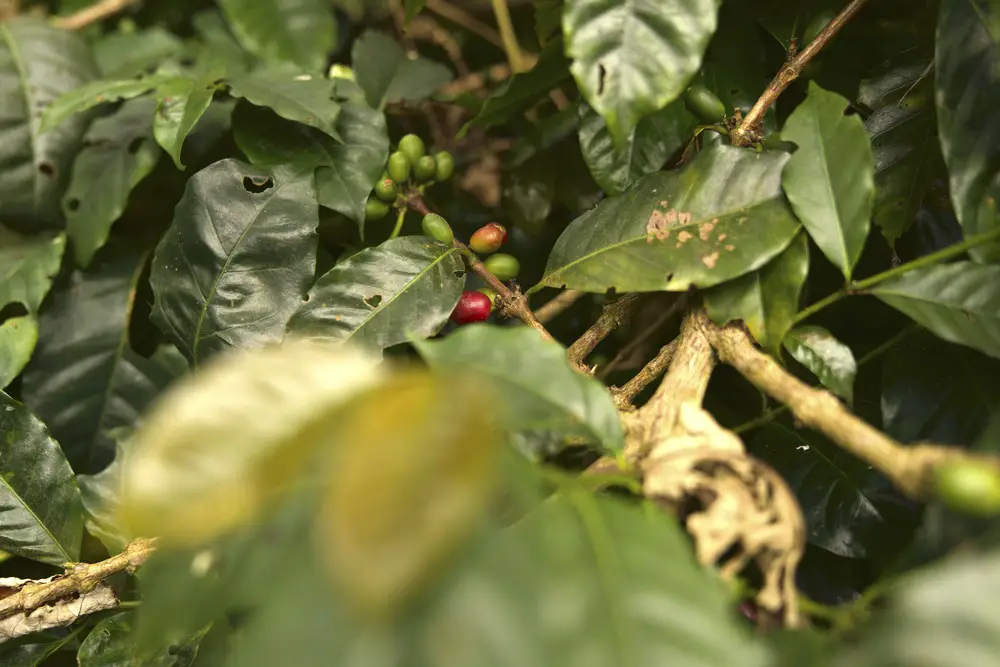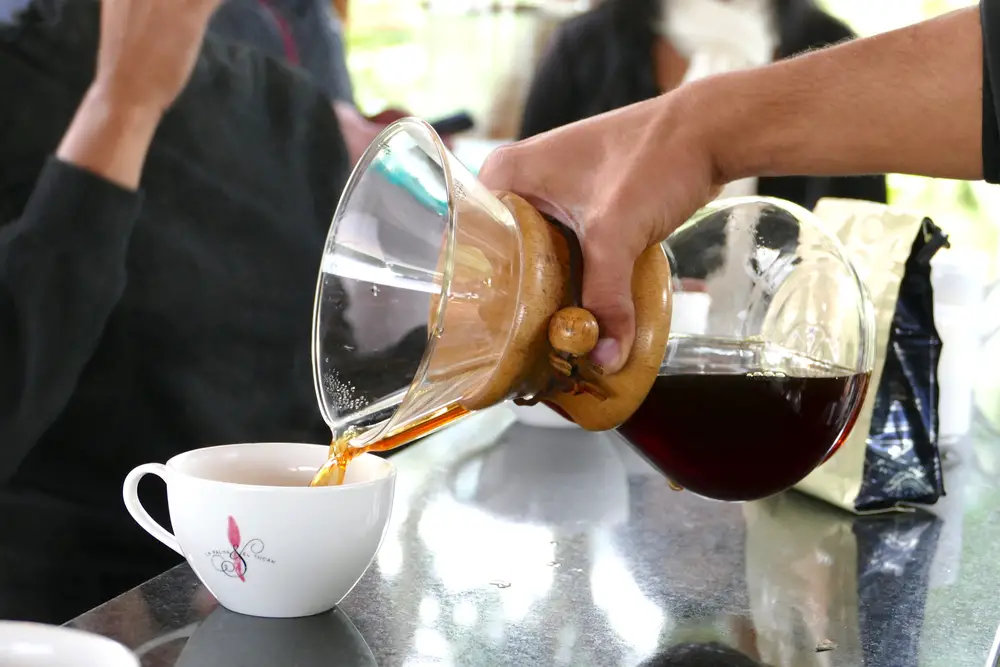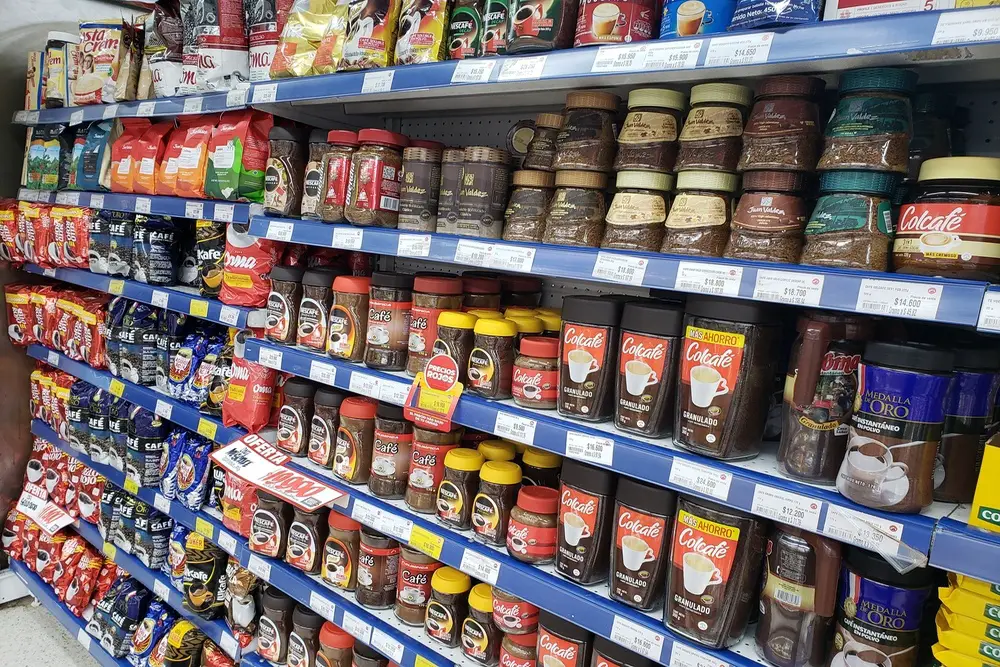The packaging of the coffee is the final stage of coffee logistics for distribution to the consumer. It differs in size, functionality and materials of manufacture. However, along with ensuring food quality and safety and facilitating transportation and logistics, sustainability has also become one of the goals of coffee packaging.
Every day, on the internet and in the media, we are confronted with information about the impact of human activities on the environment, but there is uncertainty about how best to reduce these negative impacts.
Table of Contents
What is sustainability?
The definition of sustainability has been formalized by organisations, companies, NGOs and policy makers and adapted to different sectors. It is estimated that there are more than 300 definitions of the term “sustainability”. However, a distinction must be made between sustainability and sustainable development.
According to a 1987 UN report (Brundtland Report), sustainable development is defined as “development that meets the needs of the present without compromising the ability of future generations to meet their own needs”.
From this concept derives sustainability, which consists of a set of objectives aimed at improving the quality of life and solving problems of an economic, social and environmental nature.
Packaging industry and sustainability
Differences within the packaging industry
The packaging industry and the goods packaging industry have similarities in that their ultimate goal is to provide an enclosure for products. However, each term refers to a specific type of packaging.
All containers in which a product is stored directly are referred to as packaging, e.g. B. bottles, cans, bags and so on. Finally, the term packaging generally refers to the use of boxes, i. H. when products are to be stored, preserved or transported in large quantities.
On the way to sustainable packaging
Every sector, especially the packaging sector, has been under intense pressure for decades to reduce packaging waste and excess packaging and improve their recyclability. At the same time, companies in the sector try to ensure that environmental goals do not hamper economic growth, employment and living standards.
To determine if a package is environmentally friendly, the best sustainable packaging manufacturers conduct a full life cycle assessment to determine a product’s environmental impact beyond the materials of construction. Sustainable packaging is packaging that has the lowest possible environmental impact as far as possible.
They are often made from recycled materials, which reduces wasted resources in manufacturing. In addition, the manufacturing process tends to be more efficient as it further minimizes resources, e.g. B. Less electrical energy is used to produce more packaging.
At the same time, the use of sustainable packaging is increasing. It goes back to the initiative of the companies responsible for packaging or packaging production. In addition, consumers are becoming more and more familiar with their use.
For example, several companies including McDonald’s, Unilever, Nestlé, Kraft-Heinz, PepsiCo and Coca-Cola have set targets in their action plans to improve the sustainability of their packaging by 2025 and beyond.
Goals include:
- Increased use of recycling material
- Sustainable Sourcing
- Reduction of packaging weight
- Designing packaging to facilitate reuse
New tools have also been developed to assess the environmental impact of packaging throughout its lifecycle, and global warming has prompted some companies to focus on measuring ‘carbon footprints’.
The value chain of the packaging industry
In order for the entire packaging industry to function properly, a number of stakeholders need to be involved. However, it is a value chain that has changed dramatically in the last 15 years: from a linear supply and demand chain to an interconnected value chain.
Originally, the packers delivered directly to the demand of a distributor, but with the advent of new technologies, but especially with the goals of sustainability, the chain has become more complex and interconnected.
The five main players currently involved in the value chain are the sector responsible for the production of raw materials, the suppliers, the consumers, the retailers and the brand owners. But other sectors such as social networks, universities or authorities can also influence the chain.
Sustainability only became a requirement for packaging in the 1980s, coinciding with the UN report mentioned above. In the meantime, sustainability has acquired a unique and globally recognized value.
The sustainability of the packaging value chain can be improved by facilitating collection and sorting for recycling and reuse, and proper disposal and further processing of sorted packaging.
An example of how the industry has adapted is sustainable packaging such as green polyethylene, a plastic made from sugar cane, a renewable resource.
The 4 principles of sustainable packaging
The Alliance for Sustainable Packaging ( Sustainable Packaging Alliance, SPA) has established four principles that make it possible to verify the relevance of their application. Let’s look at their main characteristics.
Effectiveness
It is about the packaging system bringing real added value to society by effectively protecting products throughout the supply chain and supporting responsible consumption. Efficacy is assessed considering the following aspects:
- Reduces product waste.
- Improves functionality.
- She avoids the excessive use of packaging.
- It is cost-effective for the company.
Efficiency
It consists of packaging designed with more efficient materials and energy throughout the product lifecycle. The following points are part of the assessment:
- Improved logistical efficiency. This means that higher quality packaging can be produced with less impact during the manufacturing process, ie with less use of resources such as energy. Sustainable methods are also sought for storage and transport, e.g. B. better distributed routes that reduce fuel consumption, or the use of electric vehicles.
- Do they improve material efficiency? That is, the total amount of material used.
- Are you reducing waste? Do they ensure it can be recycled or reused?
Life cycle
This aspect aims to ensure that the life of the materials used in the manufacture of packaging can be extended as much as possible through recycling. This is evaluated according to the following points:
- reusable packaging
- reusable. This means that they serve another purpose besides storing and transporting a product.
- Biodegradability.
Cleanliness
This principle aims to ensure that the materials used for the surface treatment of packaging, e.g. As printing inks, do not pose any danger to people or the environment. It is evaluated according to the following aspects:
- Reduces emissions into the atmosphere.
- Reduces greenhouse gas emissions.
- Reduces toxicity.
Is it cost-effective to commit to sustainability in packaging?
Meeting the sustainability commitments proposed by companies requires a significant financial outlay. Additionally, the key challenges for decision makers are cost and time to market.
The companies have no business case for more sustainable packaging, although they advertise their sustainability intentions, which could make them more attractive to a certain segment of consumers. This creates a gap between what companies say and do and what can and is actually done.
, for the coffee industry, where a significant percentage of retailers currently use paper as packaging material, investing in green credentials can be a wise move.
This is due to the fact that supply and demand for coffee are well matched, despite a slight increase in price. In other words, coffee consumers are willing to pay for a quality product or a product with special features, such as B. organic coffee or coffee with a fair trade seal, to pay more.
Materials used for coffee packaging
Plastic is the most commonly used material in the packaging industry, be it in the form of bags, bottles or other containers. Bags made of different materials are mainly used for coffee. The following are the main materials used in coffee packaging, some of which have sustainability properties.
Plastic
Plastic is the most common material used for food packaging. It is a very versatile material that can be used for various presentations such as bottles, bags or cups and mugs. Around 40% of food packaging is made of plastic.
However, in the case of coffee, plastic is not suitable as it allows light and air to pass through, which can affect the shelf life of the product.
Aluminum
Aluminum is used to make pouches and coffee capsules like Nespresso. Resistant to temperature changes, it protects the coffee by preserving its aroma and freshness, which extends its shelf life.
This material is lightweight, easily modified for different uses, but most importantly, it can be recycled indefinitely.
Glass
Glass is ideal for food packaging because it is less toxic than other materials and is also strong and durable. The most common form of delivery is the bottle, which is widely used for beverages, but jars or large-mouth jars are also used for coffee.
It is a reusable and recyclable material that can be reused by crushing, melting and reshaping without any loss of quality.
New sustainable alternatives for coffee packaging
There are several material options for making more sustainable coffee packaging than the usual. The most important alternatives to conventional packaging are presented below.
Kraft paper
Kraft paper is made from wood pulp and is 100% natural, biodegradable and compostable. In addition, it is very easy to obtain.
Kraft paper gets its name from the kraft process used in its manufacture. In this process, wood chips are boiled in sodium sulfide and sodium hydroxide to chemically convert them into pulp.
Over time, the process of making kraft paper has become more environmentally friendly. Today, most of the water and chemical by-products from this process are reused.
However, the question arises as to how difficult it is to ensure that the kraft paper packaging is sealed in such a way as to prevent the ingress of oxygen, which is known to degrade the quality of the coffee grains.
For this reason, some manufacturers make kraft paper bags with two or more layers to protect the beans from moisture, direct sunlight, oxygen, and other external factors that affect the freshness of the coffee.
Obtaining the wood needed to make kraft paper requires felling of trees, which can result in some deforestation; however, many of the trees used to make paper come from sustainably managed forests. This means that only 80% of the amount produced annually is harvested. In addition, for every tree felled, at least one additional tree must be planted.
Rice paper
Rice paper is produced in a sustainable way because its main raw material is the rice plant, a crop that has less soil erosion than other crops, according to USA Rice. But the most outstanding aspect is that it is an alternative to traditional paper, which can cause serious environmental damage due to deforestation. Cultivation, however, uses a lot of water, between 4,000 and 5,000 liters of water for every kilo of grain.
In addition, this material is biodegradable and compostable. It is traditionally made by soaking and washing the fibers, bark and pith of the plant in water. The pulp is stretched, pressed, rolled and cut to size. The result is a textured, non-fibrous white sheet of paper.
Like kraft paper, rice paper is often used in multiple layers to increase its strength and protection. In the specific case of coffee or other food, aluminum is used on the inside to ensure durability and a zip or reclosable zip provides some protection against air infiltration.
Recyclable packaging
Consists of recyclable plastic bags specially designed for storing coffee.
They are made from low-density polyethylene (LDPE), a safe material that can be easily reused and recycled.
Instead of the three or four layers used in traditional packaging, these coffee bags consist of just two. They use less energy and raw materials to manufacture and are much easier to dispose of as they are separated like other recycling materials.
Conclusion
Investing in eco-friendly packaging alternatives doesn’t automatically mean you should stop using plastics or other similar materials that aren’t biodegradable or take a long time to break down. You can invest in reusing this plastic or reduce the pollution in its production.
Nowadays, packaging alternatives for coffee are mainly made of paper, as it is consumed immediately and is therefore ideal for the combination of sustainability and packaging. Recent developments such as the introduction of multi-ply paper sacks can be an alternative to the traditional sacks used in supermarkets or for ground coffee where durability and properties need to be more specific.



